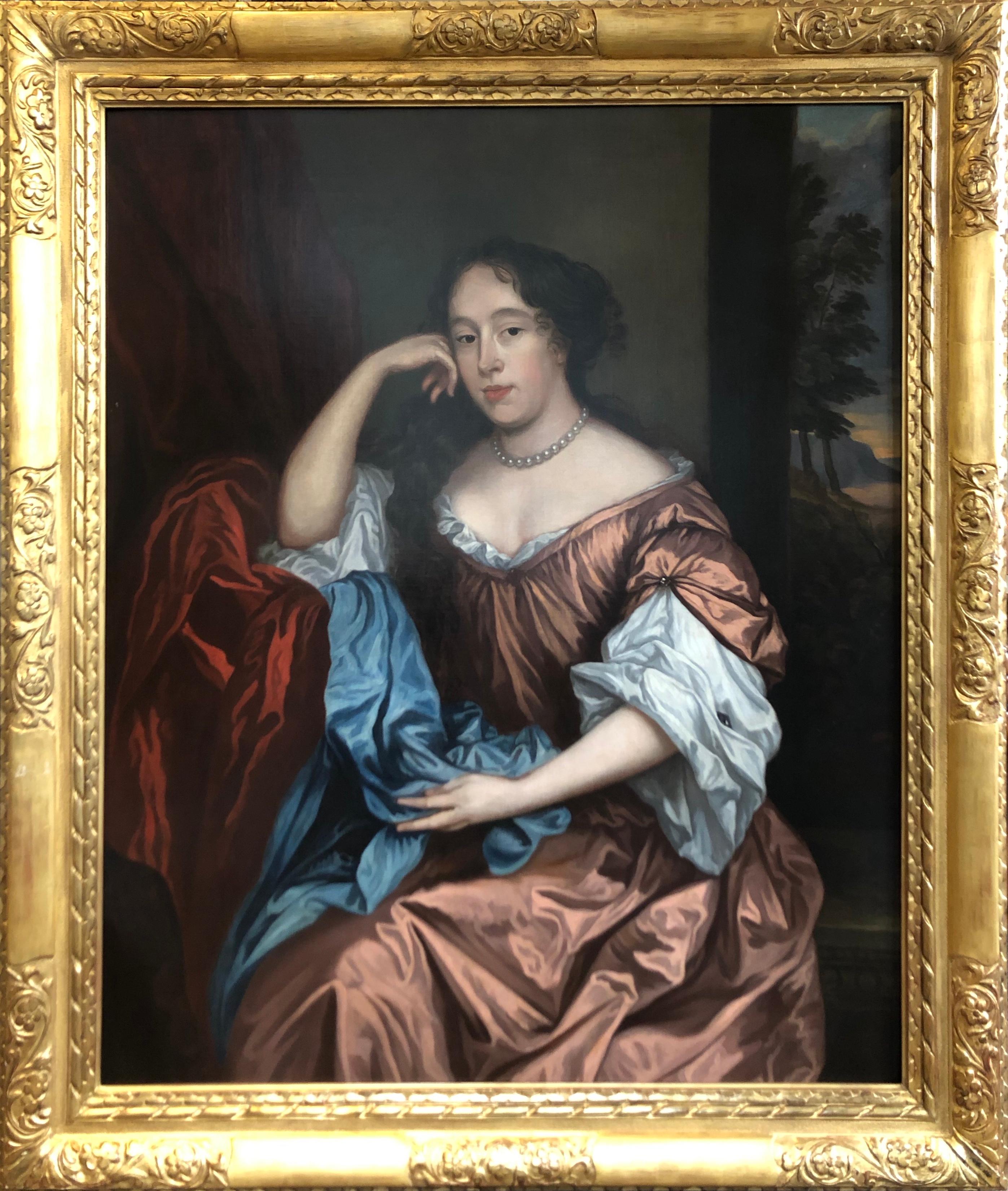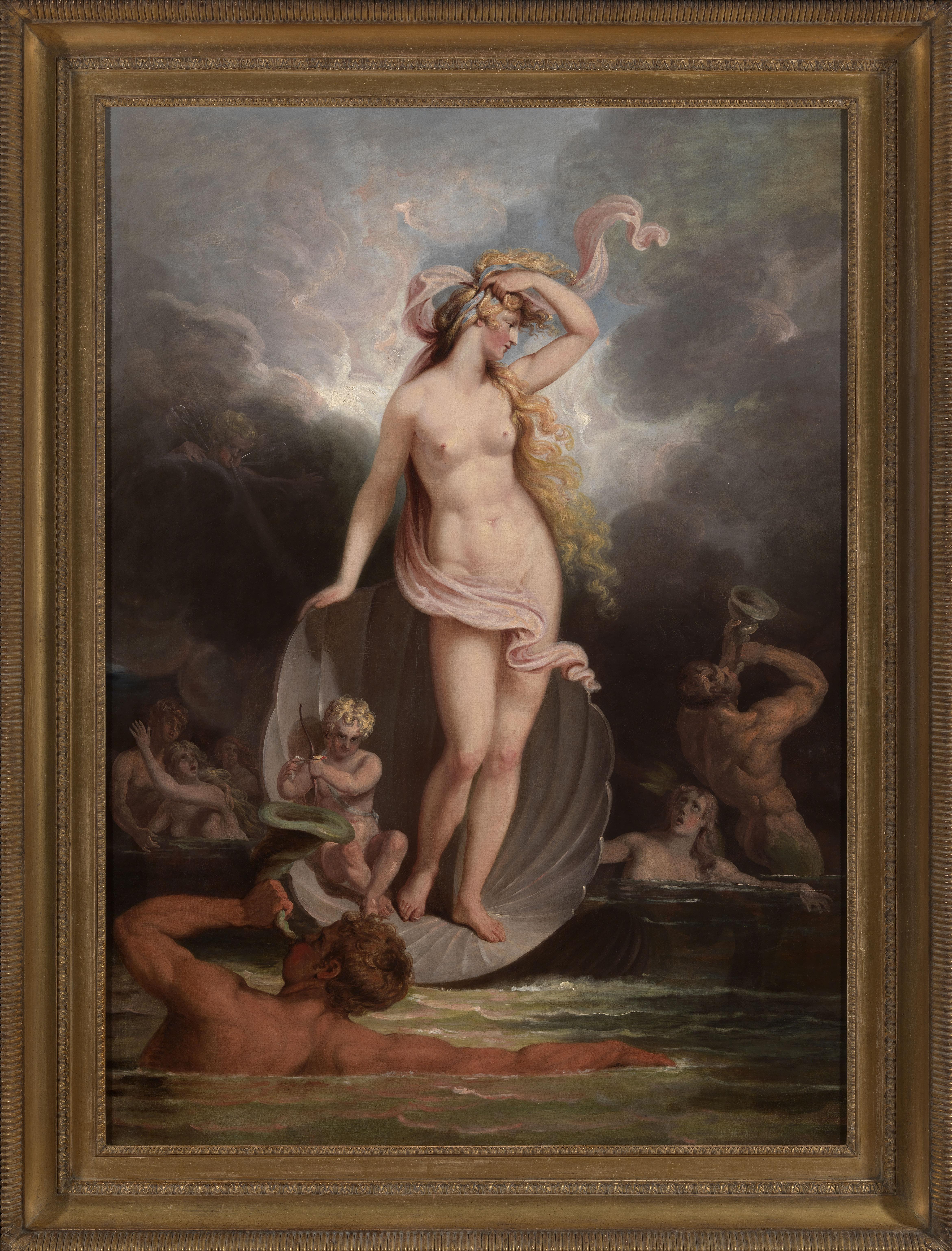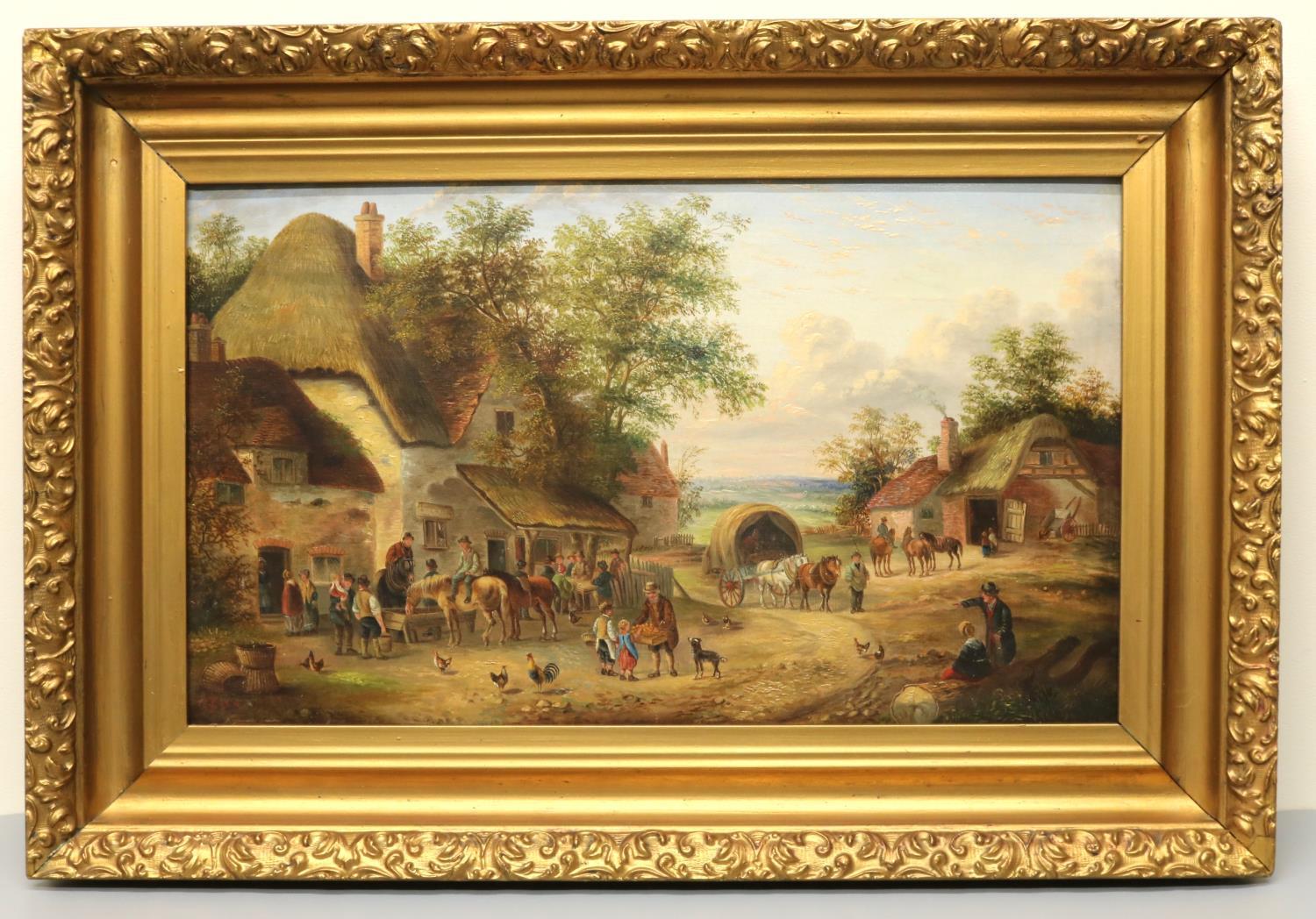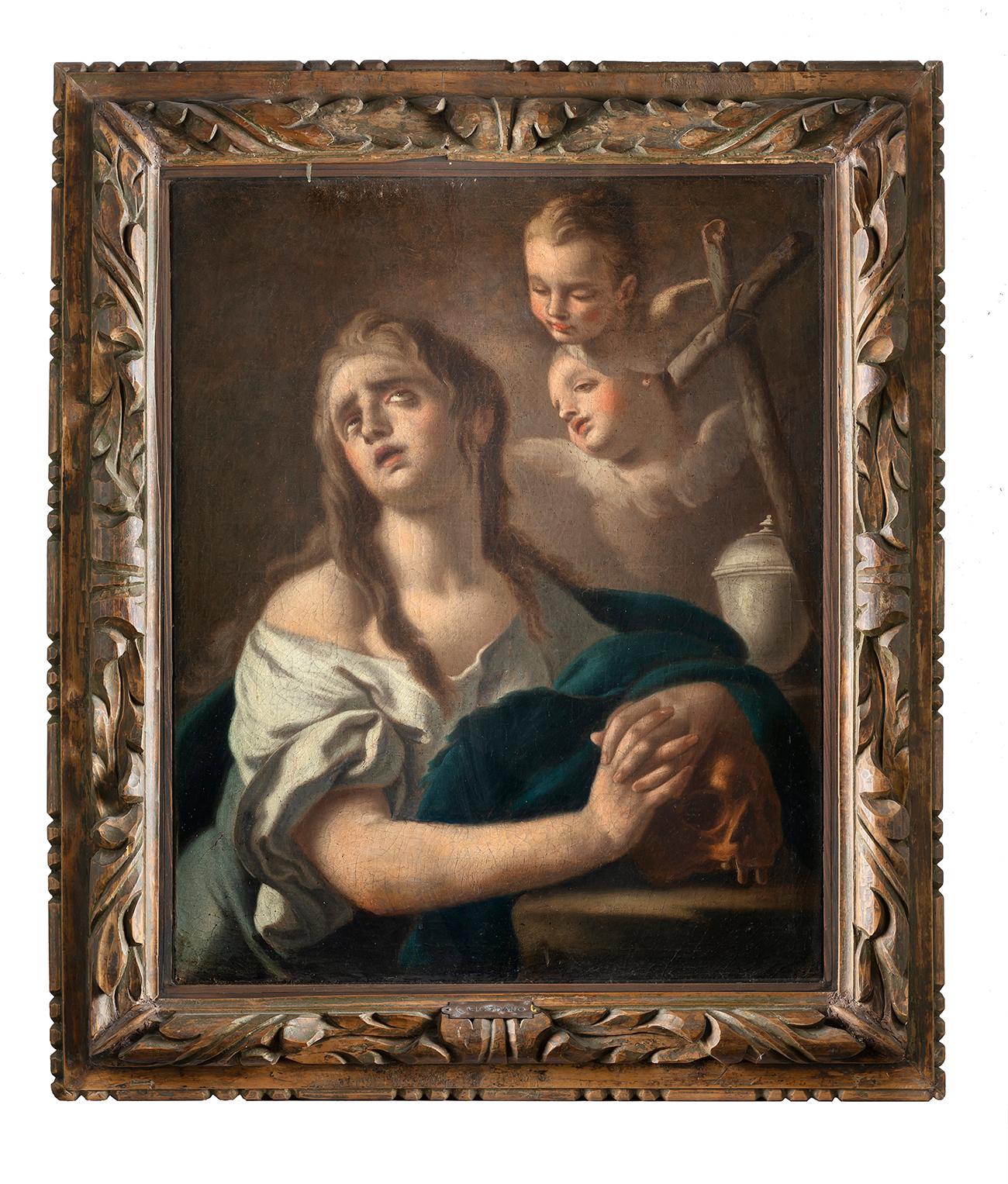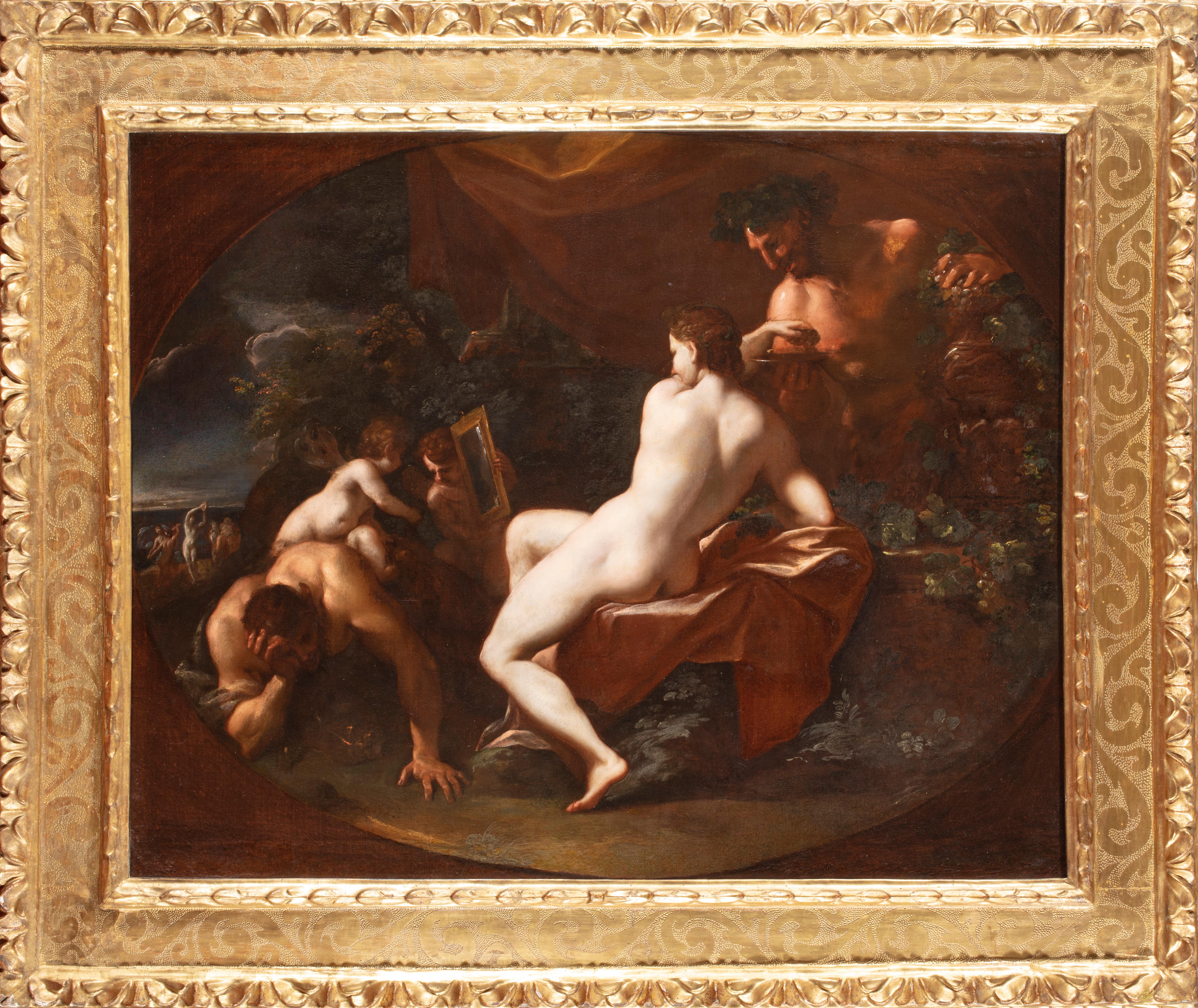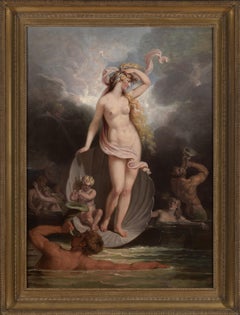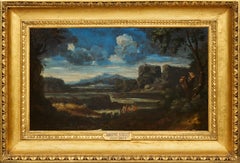Dispute On The Eucharist Rubens Paint Old master Oil on table 17th Century Italy
View Similar Items
Want more images or videos?
Request additional images or videos from the seller
1 of 20
Dispute On The Eucharist Rubens Paint Old master Oil on table 17th Century Italy1620-1670
1620-1670
About the Item
- Creation Year:1620-1670
- Dimensions:Height: 33.08 in (84 cm)Width: 25.99 in (66 cm)
- Medium:
- Movement & Style:
- Circle Of:Peter Paul Rubens (Siegen 1577 - Antwerp 1640) (1577 - 1640, Flemish)
- Period:
- Condition:
- Gallery Location:Riva del Garda, IT
- Reference Number:1stDibs: LU98818376632
About the Seller
4.8
Platinum Seller
These expertly vetted sellers are 1stDibs' most experienced sellers and are rated highest by our customers.
Established in 2017
1stDibs seller since 2018
200 sales on 1stDibs
More From This SellerView All
- Winged Putti Paint Oil on canvas Baroque 17th Century Mitological MichelangeloLocated in Riva del Garda, ITAttributed to Giovanni Battista Merano (Genoa 1632 - Piacenza 1698) Pair of winged cherubs with chains Genoese school, around 1670-80 Oil on canvas, 67 x 57 cm. Framed 89 x 78 cm. This pleasant painting, depicting a pair of winged cherubs, is attributed to Genoese Giovan Battista Merano (Genoa 1632 - Piacenza 1698), trained in Genoa first in the workshop of Giovanni Andrea De Ferrari, and then of Valerio Castello, of whom he became one of the best students. It was probably the latter who advised the student to stay in the then Duchy of Parma to study Correggio and Parmigianino, as he had done in his time. During this first stay in Parma Giovanni Battista worked on the fresco decoration of the oratory...Category
17th Century Old Masters Paintings
MaterialsOil
$6,726 Sale Price20% Off - Circumcision Christ Lairesse Flemish Paint Oil on canvas Old master 17th CenturyBy Gérard de Lairesse (Liège 1641 - Amsterdam 1711)Located in Riva del Garda, ITGérard de Lairesse (Liège 1641 - Amsterdam 1711), attributed Circumcision of Christ Oil on canvas, 120 x 102 cm., In frame 138 x 119 cm. The p...Category
17th Century Old Masters Figurative Paintings
MaterialsOil
$10,675 Sale Price20% Off - Banquet Attrib to Van Den Hoecke Religious Oil on Table Old Master 17th CenturyBy Gaspar van den Hoecke (Antwerp, 1585 - 1648)Located in Riva del Garda, ITGaspar van den Hoecke (Antwerp, 1585 - 1648) Herod's banquet Early 17th century oil on panel, with gold highlights (in the guise of Salome and in the curtains of the building in the background) 56 x 80 cm. framed 72 x 90 cm. Note: The painting probably dates from an original by Frans II Francken (1581 - 1642), which is shown under the number 0000344789 in the RKD. Valuable oil painting on panel depicting King Herod and the beautiful Jewish princess Salome according to the episode taken from the Gospel of Matthew (14.3-11), which sees her as the protagonist in the story of the martyrdom of John the Baptist. The event shown is a cross between history and legend, a myth faced for centuries by artists in every field: Caravaggio in painting, Oscar Wilde in theater, Richard Strauss...Category
17th Century Old Masters Paintings
MaterialsOil
$14,196 Sale Price20% Off - Landscape Baroque 18th Century Oil on canvas Paint Shepherds Italy CignaroliLocated in Riva del Garda, ITPiedmontese painter of the eighteenth century Pendant of paintings Landscape with wild boar hunting scene Landscape with pastoral scene Oil on canvas, 66 x 132 cm, framed 68 x 134 We show you this pleasant pendant of paintings, characterized by a clear atmosphere and a delicate chromatic harmony, in perfect harmony with the rocaille taste of the Savoy capital of the full of the second half of the 18th century, and can be compared to a Piedmontese painter, presumably active in Turin in that period. The first work, with a pastoral and Arcadian character, shows a small group of shepherds, intent on guarding their animals: the romantic theater that sees a shepherd on horseback singing a song to cheer the rest of the companions to make the scene affected. In the second work, however, the composition is centered on the lively and rich group of figures of hunters who, armed with swords and spears and with the help of hunting dogs, surrounded the wild boars. The style of our two canvases, as well as the type of subject represented, evokes the compositions of Vittorio Amedeo Cignaroli (Turin, 1730 - 1800) with the illustrative tradition repeatedly addressed by the author, the main landscape painter of Piedmontese Rococo, as recalled in the canvases made for the Palazzine di Stupinigi and Racconigi. His technical ability and his rigorous craft earned him the esteem of the Savoy court and consequently of the Piedmontese nobles. His workshop expanded considerably due to the numerous commissions, inducing him to avail himself of the help of a considerable number of workers, apprentices and professional painters who deal with the landscape, figures or costumes according to their specialization, so it becomes difficult to establish whether a work is a workshop or an independent painter. Paintings of this format and of these subjects, often made in groups, were commissioned to be placed in palaces or in small Piedmontese and Lombard castles. Shape and size would suggest that the canvases were originally placed as over the door...Category
18th Century Old Masters Paintings
MaterialsOil
- Poussin Moses Landscape Old master Oil on canvas Paint 17th Century Italy ArtBy Nicolas Poussin (Les Andelys 1594 - Rome 1665)Located in Riva del Garda, ITNicolas Poussin (Les Andelys 1594 - Rome 1665) Workshop of Little Moses found by Pharaoh's daughter Oil painting on canvas Measurements: canvas 45 x 59 cm., in frame 57 x 71 cm. We present this splendid work representing the episode, taken from the Old Testament, of the finding of little Moses by the daughter of the Pharaoh (Exodus 2, 1-10), and which reveals from the first glance the unequivocal pictorial style of the painter. Nicolas Poussin (Les Andelys 1594 - Rome 1665). Poussin spent most of his life in Rome giving life to works capable of fusing the ideal of French classicism...Category
17th Century Old Masters Paintings
MaterialsOil
$7,836 Sale Price41% Off - Paint Religious 17th Century Oil On Panel Saint Girolamo Leonardo Italy HolyLocated in Riva del Garda, ITThis splendid panel, made in the last decades of the sixteenth century, depicts San Girolamo, a monk who lived between the 4th and 5th centuries, presente...Category
17th Century Old Masters Paintings
MaterialsOil
You May Also Like
- Portrait of a Lady, After Sir Peter Lely (1610-1680) Oil PaintingBy After Sir Peter LelyLocated in Uppingham, GBOil Painting After Sir Peter Lely (1610-1680) Portrait of a Lady Housed in a Lely gold Leaf Frame. Peter Lely: In 1647 he became a member of the Pain...Category
17th Century Old Masters Portrait Paintings
MaterialsOil
- 18th century allegorical painting of The Triumph of BeautyLocated in London, GBExhibited: London, Royal Academy, 1800, no. 93 What was happening in British history painting in around 1800? In recent discussions of the emergence of a British School of history painting following the foundation of the Royal Academy in 1768, this is a question which is rarely posed and one which is not easily answered. Examination of surviving Royal Academy exhibition catalogues reveals a profusion of artists’ names and titles, few of which remain immediately recognizable, whilst endeavours to explain the impact of exhibition culture on painting - such as the 2001 Courtauld show Art on the Line - have tended to focus on the first and second generation of Royal Academician, rather than young or aspiring artists in the early nineteenth century. This makes the discovery and identification of the work under discussion of exceptional importance in making sense of currents in English painting around 1800. Executed by Edward Dayes...Category
18th Century Old Masters Figurative Paintings
MaterialsCanvas, Oil
- Italian Landscape with Jack Players, a painting by Gaspard Dughet (1615 - 1675)By Gaspard DughetLocated in PARIS, FRHere Gaspard Dughet offers us an idyllic vision of the Roman countryside. The stages follow one another in a perfectly structured composition, revealing here a lake, there travellers walking along, gradually leading our eye to the blue horizon. But behind its classical composition, this landscape is particularly interesting because of three anthropomorphic details that the artist has hidden, opening the way to a radically different interpretation... 1. Gaspard Dughet, a landscape artist in the light of Poussin Gaspard Dughet was born on June 4th, 1615 in Rome where his father, of French origin, was a pastry cook. He was probably named Gaspard in honour of his godfather Baron Gaspard de Morant, who was, or may have been, his father's employer. His older sister Jeanne married the painter Nicolas Poussin (1594 - 1655) on September 1st, 1630. The young Gaspard was apprenticed with his brother-in-law at the beginning of 1631, which led his entourage to name him Gaspard Poussin. The first preserved works of the painter date from the years 1633-1634 and were painted in Poussin’s studio. Around 1635, Gaspard Dughet became emancipated and began to frequent the Bamboccianti circle. In 1636, he became friends with the painter Jean Miel (1599 - 1656), but also with Pier Francesco Mola (1612 - 1666) and Pietro da Cortona (1596 - 1669). This was also the time of his first trips throughout Italy. The painter, although of French origin, appears never to have visited France. In 1646 he settled permanently in Rome. A recognized painter with a solid book of orders, he remained faithful to landscape painting throughout his life, alternating between cabinet paintings and large decorative commissions, using both oil and fresco. Nailed to his bed by rheumatic fever at the age of 58, he died on May 25, 1675. 2. Discovering an idealized landscape Beyond a relatively dark foreground that takes us into the landscape, we discover a vast bluish horizon: a plateau surrounded by deep ravines advances to the right, overhanging an expanse of water that sparkles below. A road winds through a mountainous mass as if leading us to the fortress that crowns it; another town appears in the distance at the foot of three conical mountains. The composition is rigorous, mineral, and structured by geometric volumes. The various stages in the landscape lead one to the next attracting the eye towards the horizon located in the middle of the canvas. The general impression is that of a welcoming and serene nature. In many places the paint layer has shrunk, or become transparent, revealing the dark red preparation with which the canvas was covered and accentuating the contrasts. Human presence is limited to three jack players, leaning against a mound in the foreground. Their long garments, which may evoke Roman togas, contribute to the timelessness of the scene. Close examination of the canvas reveals two other travellers on the path winding between the rocks. Made tiny by the distance, their introduction in the middle register, typical of Dughet's art, lengthens the perspective. While it is difficult to date the work of a painter who devoted his entire life to the representation of landscapes, it is certain that this painting is a work from his later years. The trees that occupied the foreground of his youthful compositions have been relegated to the sides, a stretch of water separates us from the arid mountains counterbalanced by two trees represented on the opposite bank. The introduction of this stretch of water in the middle of the landscape betrays the influence of the Bolognese and in particular of the Dominiquin (1581 - 1641) A number of similarities with a drawing in the British Museum might suggest a date around 1656-1657, since, according to Marie-Nicole Boisclair , it has been compared with the Prado's Landscape with the Repentant Magdalene, painted at that period. 3. Three amazing anthropomorphic details While some late Renaissance landscapes offer a radical double reading, allowing one to see both a face or a human body behind the representation of a landscape, it seems interesting to us to hypothesize that Gaspard Dughet had fun here by slipping in a few details that, taken in isolation, evoke human or animal figures. We will give three examples, looking closely at a cloud, the trunk of a broken tree and the top of a cliff. The main cloud could thus evoke a Christ-like face or that of an antique god...Category
1650s Old Masters Landscape Paintings
MaterialsOil
- Stag Hunting in the Vicinity of Nuremberg by a German Artist Peter von BemmelLocated in PARIS, FRThis small landscape shows a hunting scene: two riders are chasing a stag with their dogs at the edge of a forest. Signed by Peter von Bemmel, it is typical of the production of this...Category
1720s Old Masters Landscape Paintings
MaterialsCopper
- Portrait of Jean-Baptiste Greuze, painted on linen by his daughter Anna GreuzeLocated in PARIS, FRThis replica of the last self-portrait of Jean-Baptiste Greuze painted in 1804, executed by his daughter Anna at her father's side and recently rediscovered, provides us with a poignant image of the great artist, represented with panache despite the disillusions of life. 1. Jean-Baptiste Greuze Jean-Baptiste Greuze was the sixth child of a roofer from Tournus and retained a certain rusticity in his behaviour from his provincial childhood, beyond his taste for describing picturesque scenes of the countryside. He initially started training with a little-known painter from Lyon, Charles Grandon, before his genius was recognised in Paris where he became a full-time student of the Académie (of Painting) in 1755. He exhibited his work for the first time at the Salon during the summer of 1755, before leaving on a trip to Italy in the company of Louis Gougenot, abbot of Chezal-Benoît. Upon his return to Paris, Greuze became a prolific painter, participating widely in the Salons held between 1759 and 1765, to which he sent no less than 63 paintings: numerous genre scenes (The Marriage Contract, The Beloved Mother), but also portraits of his family circle, of courtiers and art lovers, or of his colleagues. The Academy closed the doors of the Salons to him in 1767 for not having produced his reception piece within six months of his reception, as was the tradition. He worked actively on this painting (Emperor Severus rebukes Caracalla, his son, for trying to assassinate him ) until the summer of 1769, tackling historical and mythological subjects for the first time. Once this was completed, he was then fully admitted to the Academy, but as a genre painter, and not as an historical painter, which had been one of the greatest humiliations of his life. Greuze then refused any participation in events organised by the Academy or its successor, the Academy of Fine Arts until 1800. Abandoning history painting, he gave a new twist to genre scenes, bringing them closer to history painting, as in this pair of canvases which constitutes some of his masterpieces: The Paternal Curse: The Ungrateful Son and The Paternal Curse: The Punished Son . Married in 1759 to Anne-Gabrielle Babuti, the daughter of a Parisian bookseller, his marriage was unhappy and his wife probably frequently unfaithful. The institution of divorce enabled him to record their separation in 1793, keeping his two daughters Anna-Geneviève, born in April 1762, and Louise-Gabrielle, born in May 1764, with him. Little is known about his daughter Anna except that she was herself a painter and lived with her father until his death. It is likely that most of the paintings she produced up to that date were attributed to her father, whose technique she shared to a great extent, making it extremely difficult to establish an autonomous corpus of her paintings. Greuze died in his studio at the Louvre on March 21st 1805. The attention paid to the expressivity of his characters and the emotional charge they convey enabled Jean-Baptiste Greuze to enjoy immense popularity with the eighteenth-century public, and they still constitute Greuze's true modernity. As the artist said, "I dipped my brush in my heart". Greuze was also an exceptional draughtsman and a portraitist of immense talent and exceptional longevity who painted both the Dauphin (the son of Louis XV and father to Louis XVI) and the young Napoleon Bonaparte. 2. Greuze's self-portraits Greuze was very much influenced by Dutch paintings during all his life. While the source of his inspiration for genre scenes can be found in Gerard Dou...Category
Early 1800s Old Masters Portrait Paintings
MaterialsLinen, Oil
- Virgin and Child, a paiting by David Teniers the Younger after Palma VecchioBy David Teniers the YoungerLocated in PARIS, FRProvenance: Dukes of Marlborough Collection, Blenheim Palace until its sale at Christie's London on 26 July 1886 (lot 172) English private collection until its sale at Christie's London on 11 December 1992 (lot 363) Erna Weidinger Collection (1923 - 2021) - Austria Literature : Georg Scharf - A list of the pictures in Blenheim Palace - Catalogue raisonné Part 2 - London 1862 (page 166 - number 199 "after Palma Giovane") Charles Davies...Category
1750s Old Masters Figurative Paintings
MaterialsOak, Oil
Recently Viewed
View AllMore Ways To Browse
Catholic Cardinal
Cardinal Catholic
Italian Catholic Cardinals
60x84 Painting
Holy Spirit Dove
17th Century Paintings Peter Paul Rubens
Jacob Angel
Antique Lutheran
San Girolamo
Monstrance Antique
Antique Monstrance
San Gregorio
Rubens Circle
Prince Paolo
Altar Catholic
Catholic Altar
Jacob Jordaens
Christ Disputing
